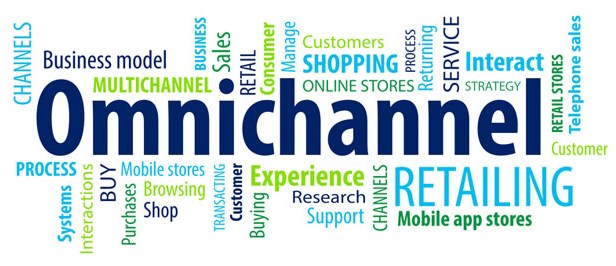As customers worldwide combine online buying with physical shopping, companies have to organize their supply chain in a seamless way, offering the consumers one great experience. But how to do that and what are the IT platform requirements?

The number of physical street shops is decreasing due to strong e-commerce growth. Physical shopping is turning more into ‘lifestyle’ shopping; consumers want to have an experience in which they can chill, hang-out, eat, drink and try some interesting products. This means that physical stores are not disappearing but that their role is changing. The role and purpose of physical stores will become to create demand rather than to fulfill demand. Consumers, long ago content with shopping only in brick-and-mortar shops, today want to interact with brands through both online and offline channels.
Traditionally, consumers were serviced by multiple channels e.g. shop and online. For retailers, the need to become omnipresent has given rise to omnichannel retail, in which shoppers seamlessly move between different channels but still enjoy a unified, consistent experience across digital and physical channels, from browsing to order fulfillment. Failure to offer this omnichannel experience can cause retailers to lag behind more agile competitors. However, whereas 90% of the digital consumers expect consistent interactions across business channels, only 22% of the US retailers consider omnichannel experience a main priority (sources: Statista, Zoominfo).

The key to a seamless omnichannel experience is a modern supply chain - one that extends delivery across mobile apps, websites, social media and stores. To get there, companies must break down silos between online and physical stores, and manage product responsibilities as one collective marketplace. They also need new technologies, in which traditional WMS & inventory systems are replaced by a platform IT solution. The platform must be able to receive input from multiple ordering sources, support multiple options of delivering products, while providing continuous visibility.
No matter where, when or why an interaction is happening, consumers should always feel as if they are talking to the same brand, with the same commitment to creating value and satisfaction. Many brands continue to deliver fragmented experiences that feel markedly different across touch points. They are unquestionably failing to deliver an omnichannel experience. Some of the examples below could indicate your company is still one of them.
In identifying ‘needing to repeat information’ as one of the most common pain points, consumers confirm an unfortunate reality: today’s organizations cannot recognize them, let alone the nuances of their issues, as they move from channel to channel.
Despite years of discussion about ‘omnichannel’, some retailers have in-store and online prices that routinely fall out of sync, creating a situation in which agents and consumers have to waste time reconciling the listings.
A mobile ordering/pickup concept requires complete, real-time alignment between the inventory advertised on the app and the actual products that are available storefront. Some retailers fail to maintain this consistency and as a result, consumers may end up walking or driving to the brick-and-mortar location only to be told that the product they purchased is not actually available.
When some of your customers still have experiences in the ‘front-end’ as just described, it means that your supply chain and/or IT systems in the ‘back-end’ still require attention and improvements. Looking at future consumer behavior, it is clear that complexity in future supply chains will continue to increase.
The design of supply chains and the selection of logistics and technology providers is a specialization of BCI Global. Feel free to reach out and share your current and future business challenges with us.